Why Tiny Houses are Good
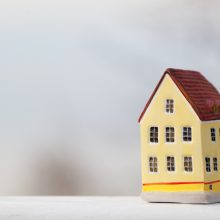
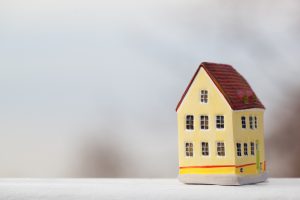 What Is a Tiny House?
What Is a Tiny House?
With recent interests in space, time, and financial efficiency, people all over America have been hopping on board with the concept of the tiny house. A tiny house is a living space constructed on around 400 square feet or less which forces the owner to live a sustainable and minimalist lifestyle. The popularity of the tiny house has risen in the past few years due to changes in the economic and political climate of the US. In some cases, the tiny house is mobile and allows owners to move about the country with their home on wheels. Today, the tiny house concept has become more than an alternative way of living, it is a movement that allows people to make the most of resources available to them, whether it is limited funds, space, or living situation, the tiny house is a practical option.
How Will a Tiny House Save Money?
Building a tiny house is not as expensive as you might imagine. Tiny houses take up very little space, so you don’t need a large plot of land for construction. The average tiny house is made of inexpensive materials like plywood and utilizes as much space as possible. Instead of spreading the living space wide to accommodate the owner, lofted areas allow the tiny house to take less ground space without sacrificing basic necessities.
Additionally, a tiny house typically allows the owner to live mortgage free. Around 78% of participants own their tiny house compared to the millions of people in American who rent their living spaces. The average tiny house is valued at less than 10,000 dollars, so you don’t need to accrue large savings to be able to afford one. Because of the size of these tiny houses, they are also energy efficient and require less lighting and overall energy expenditures, saving on monthly electricity costs. In many ways, the smaller space forces tiny house people to live life with only the essentials. The limited space does not allow for an abundance of consumer products, so residents are more inclined to save money and not spend on unnecessary items because they will not fit into their tiny houses.
The Tiny House in a Modern Context
Today, tiny house living makes sense. With technology constantly advancing and innovations making our lives easier, the tiny house is more realistic than it has ever been before. All-in-one products allow tiny house people to make minimal purchases to accommodate their small spaces. From an environmental perspective, tiny houses contribute a small carbon footprint, considering the lower energy use. Because most tiny houses are mobile, people are able to move to wherever they are needed, so you don’t need to commit to a location. The tiny house movement also opens up room for new innovations for practical and sustainable use, bringing together science and lifestyle norms. As a revolution against traditional living, the tiny house community offers a wide variety of resources for those considering making the change. Online tutorials and printable housing plans make building your own tiny house totally possible.
Summary
As America’s economic and political contexts are constantly changing, the tiny house offers a sustainable way of life to those who are not interested in committing to a traditional lifestyle. Often, maintaining a normal sized house consumes are large amount of energy in the form of electricity (lighting and regulating temperature) as well as on the part of the home owner who must accrue large amounts of money to both purchase and maintain the house. Minimal lifestyles have recently become quite popular, and the tiny house is the perfect way to transition into a minimal lifestyle because of the space limitations. Tiny houses are affordable and give homeowners freedoms that they would not be able to achieve in a traditional house such as living mortgage free, the ability to move the entire home, and complete control over the house including its construction.
Why buy a Tiny House?
 The tiny house movement represents a growing trend that many are using as a way to both cut costs and define how they choose to live. It’s both eco-friendly and authentic because it gives people the freedom to choose to downsize on their own terms.
The tiny house movement represents a growing trend that many are using as a way to both cut costs and define how they choose to live. It’s both eco-friendly and authentic because it gives people the freedom to choose to downsize on their own terms.
The Tiny House Movement
With the economy in flux, and many people downsizing, as a result, the tiny house movement has exploded on the scene. Many people have found more reasons to go small instead of staying big. This movement has affected the way people are choosing to live and how they define their personal definition of quality of life. With this being said, many are asking why they should buy a tiny house. For many, the answer to this question is yielding far more pros than cons. Many believe that tiny homes represent cost-effective ways to own your own home without going broke and having to compromise in other areas. Aside from money, a tiny home represents both freedom and flexibility, in addition to yet another way to define who we are and what’s important to us. This may be the reason why so many people, both young and old, are being pulled into this movement as a way of defining their own lives in an intensely personal way.
For many, the tiny house movement spells simplicity, more time and freedom, and less cost. These are attractive benefits to many people who have dared to ask the trending question, “why buy a tiny house?” This question has lead many to seek and find many beneficial reasons why making the jump from a traditional home to a tiny home is the thing to do. Putting the pieces to the tiny house puzzle together uncovers many of the reasons, both big and small, that tiny houses hold the keys to so many people’s answer to home sweet home.
Why Buy a Tiny House?
The answers change depending on who you ask. For retirees, a tiny house represents time to travel, less upkeep, and a chance to live as they please during their golden years. For the young couple just starting out, a tiny house may represent an opportunity to save money yet still own their own home. For the young, a tiny home can also be considered a starter home, and for all those that fall somewhere in between those two categories, the answers are as unique as the individuals that supply them. However, one thing is for sure, to most people young, old, and in-between, the tiny home movement represents an intensely personal way to live life on their own terms.
Less Upfront Cost & Energy Consumption
Logically speaking, tiny homes require less money because they are significantly smaller. This means there are fewer materials and labor cost, although the cost per square foot may be higher due to the fact that these homes still have all the features of traditional homes, just smaller. However, the money spent is still considerably less, expressly because of the size of the home. Additionally, tiny homes are eco-friendly in that they require less energy to heat and cool because of their much smaller footprint. With mobility being a feature of many tiny homes, energy consumption can even be manipulated simply by moving the home under a shade tree.
Less Water Consumption & Trash
Tiny homes come with small appliances and features. If you have a small shower and water heater, chances are your showers will be shorter. The same sentiment can be expressed with trash. A small home usually calls for less to dispose of and smaller more economical appliances usually yield a lot less trash.
The reasons for choosing to live in a tiny home are many for most people. Fortunately, this trend is growing and happens to be both eco-friendly and cost-effective, in addition to being intensely personal. Regardless of what the specific reasons are for this growing trend, it has sprouted wings and is taking the country by storm.
Who Can Build A Tiny House?
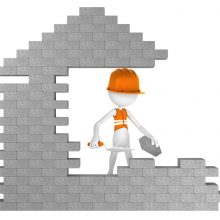
It is YOU Who Can Build a Tiny House
You’ve done your research and are finally ready to take the plunge. You’ve either always been a minimalist inside or you are just really bored with mainstream housing and its cost. For some it seems far fetched or even an unobtainable dream. Discovering that it is you who can build a tiny house is the most empowering part of this exciting excursion toward a new way of life. You are also not going at it alone. There are many communities for tiny house living, both online and in real life. These communities come together to help and encourage. From frequently asked questions to direct recommendations – tiny house communities are an essential resource as you get started on building your tiny house.
Where to Begin
With all the “do it yourself” tools on the internet it’s incredibly tempting to go at yourself nail and hammer. I recommend input and guidance if this is the path you choose. Don’t forget, there is DIY information from companies like Tumbleweed. These are for people with less carpentry and architecture experience. If you fall into these categories or not it is absolutely possible to build a tiny house yourself while a professional oversaw the project. Everyone has to start somewhere, and tiny is a totally viable way to do so.
Team up!
Here’s where your tiny house community comes into play. After attending a few tiny house meetups, seek out veteran builders. They will be have knowledge of the great do’s and don’ts of the trade. With the added encouragement and possibly more hands to make for light work- your tiny house will be underway in no time. Once you have your tiny house project moving forward, don’t hesitate to reach out and help another newbie. It’s important to be an active member of the tiny house community. In order for the tiny/small house movement to make head-way cooperation is vital.
The logistics
Ah, the fun stuff. Before you have your lumber dropped off in your front yard seek out the building codes in your area. This is among the most important part of figuring out if you can build a tiny house. Don’t be so bold to think you can pull the wool over the cities eyes by saying it’s a camper or that it being on wheels makes you immune to zoning rules-this is not the case. Stay educated on your district’s laws to remain one step ahead. Remember if they want to stop you, they will.
You’ve got this
With the professionals by your side, the community’s support, and city council approves your build, you are all set to prove and define who can build a tiny house. There is a lot of pre-work that goes into this project, but once you’ve done it you’re in the clear. Don’t hesitate to refer to TriangleTinyHouse.com for advice and resources.
Go Tiny, or Go Home – Why build a tiny house?
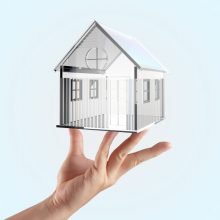
Challenging status quo
In a time that believes bigger is better- tiny houses have come to challenge this idea. Understanding the versatility and cost saving opportunity building a tiny house provides, its clearly a decision that suits more than just architects and hipsters. Though concerns arise over community housing regulations being violated, there are several loopholes to consider. Soon you will be buying your raw material to build or signing with a contractor, either way the trend of tiny houses is in full affect. Whether it’s to ditch the mortgage, live a nomadic life, or simply downsize- here are a few reasons why to build a tiny house.
Road less traveled
The tiny house movement also known as the small house movement, was more than just an architectural experiment but a social shift towards promoting environmentally conscious living, reducing the desire for “stuff” through life simplification, and to increase self-sufficiency-these are among a few reason as to why build a tiny house. Some choose to live life adventurously by adding wheels. When on wheels, a tiny house can go most places. 2 out of 5 tiny house owners are retirees who have skipped spending their life savings to move to a beach house in Florida and shacked up unconventionally to remain mobile and save money.
Save a tree or 2,000
Livin large can happen under 400 square feet. The average house is about 2,500 square feet requiring almost eight logging trucks of lumber to be built. A tiny house requires half that amount of lumber or less. Considering about 35% of solid waste stream is construction related, the tinier the home the lesser the carbon footprint, the happier the planet. Electricity, cooling, and heating are also major factors that increase CO2 emissions. It requires 45 light bulbs to light the average house while a tiny home needs only 6. There is an overall difference of about 22,000 pounds of Co2/year saved when living in a tiny house. If you want MORE, think more clean air, more safe water, more green trees.
Tiny house, BIG livin
For many, homeownership is a huge desirable goal. Since 2006 this has become nearly unobtainable for most. Building a tiny house does require capital, depending on what accommodations, feature, and amenities you desire the cost can range from $10,000 to $80,000. Entirely customized, some do go all out while building a tiny house. Downsizing does not mean you must give up your eclectic style or flare, you just take up less space when doing so!
Go tiny or Go home…
or both. When you consider why to build a tiny house you will discover very few “why not’s”. The freedom to move, the empowerment of ownership and mobility, playing a huge role in protecting the environment, and saving money are enough reasons to convince most. These are only the very beginning of how exciting and fulfilling having a tiny house can be.
New Year, New Project
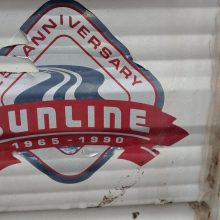
On the morning of January 2nd, we were not expecting to buy another camper. You see, we already have a lot at Lake Royale with a camper on it. Sure, Barbie and I had discussed buying another camper to setup in Cullowhee as a way to reduce our living expenses while she attends college at WCU. However, the plan was to find something in April or May so we would only have a couple months left on our lease at that time.
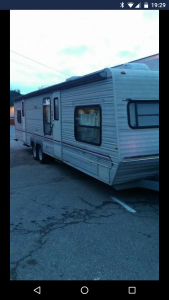
When Barbie found a 34-foot six-inch bumper pull 1990 Sunline T-3450 listed for just $1,000, she convinced me we should drive to Candler and look at it. The trailer frame alone was worth that much even if the camper was stripped off of it. To our surprise, we found a camper that seemed to be in good shape for it’s age – and we bought ourselves a new project.
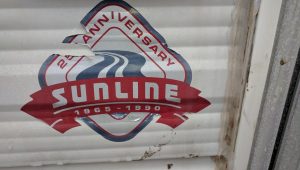
Thankfully, my sister was willing to let us store and repair the camper on her property until the end of our current lease. For now, we will be spending each weekend working on repairing, upgrading, and remodeling this camper to be our new tiny house.
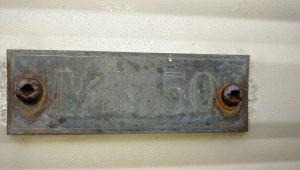
Here at Triangle Tiny House, we take a broad definition of tiny houses as inspired by the Meetup group by the same name in the Triangle region of NC. Within that group, you will find people with custom-built tiny houses on wheels – just like the ones you see on TV or in the news. However, there are many more tiny house enthusiasts that have chosen to renovate campers and RVs. There are tiny house people living in intentional communities, co-housing, or simple roommate arrangements. The key that binds all of us together is the intentional use of the space we call home. we are united by a desire to live a more sustainable and minimalist lifestyle with an abundance of freedom.
To that end, we will be renovating this 276 sqft camper to become our dorm room on wheels while Barbie is in college. After she graduates, our plan is to move this trailer to Lake Royale and attach it to a screened deck which will serve as our outdoor living area. Combined, this will give us about 550 sqft living space and make a nice tiny house by the lake.
Rather than simply take on this renovation project alone, we’re taking you along for the journey. We will be sharing our design ideas, before & after photos, and musings about minimalism, sustainability, and freedom. Stick around to see how this project and website develop in the coming weeks and months.
